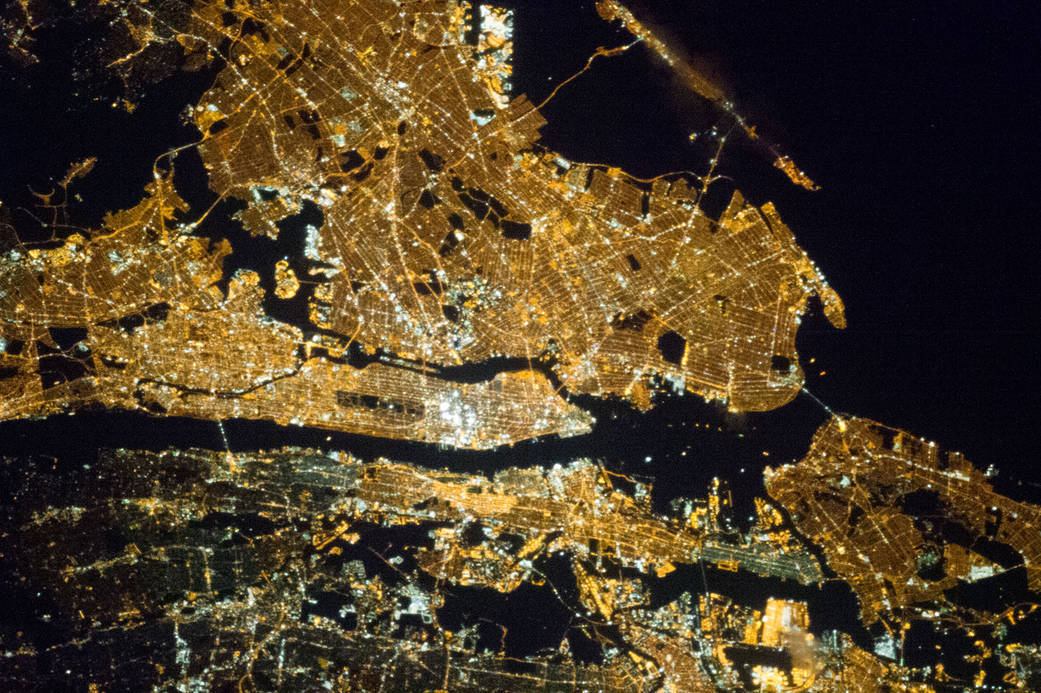
In October 2022 NASA released its 2021 Economic Impact Report, documenting its economic impact in all 50 States and Washington D.C. In 2021 NASA had an economic impact greater than $71 billion dollars and supported over 339,000 jobs, but this economic impact is not evenly distributed, with certain states home to a disproportionate size of the ‘Nasa Economy’.
NASA also breaks down the economic and employment impact of their Moon-to-Mars program. This includes the Space Launch System, the Artemis rocket, Mars Sample Return, and associated programs such as space suit development and ground system support. In 2021 the Moon-to-Mars program supported almost 94,000 jobs and generated more than $20 billion in economic activity across all 50 states & DC.
National Landscape
Breaking down this data reveals that NASA economic and employment impacts are not evenly distributed around the nation, and are concentrated in many of the places one thinks of when they think of NASA.
California, Texas, Alabama, Florida, and Maryland are the Top 5 states in both categories and account for exactly 66% of NASA supported employment in the country and 67% of its economic impact. Virginia, Colorado, Ohio, and Utah round out the Top 9, and Washington and Mississippi finish off the Top 10 in separate lists. These Top 10 states account for just over 90% of the economic output and just shy of 90% of the supported employment, demonstrating the deep concentration and imbalance of NASA’s footprint.
The following charts and graphs provide the full rankings of all 51 states (including Washington D.C.) and demonstrate the concentration of NASA’s footprint in the Top 10 states.

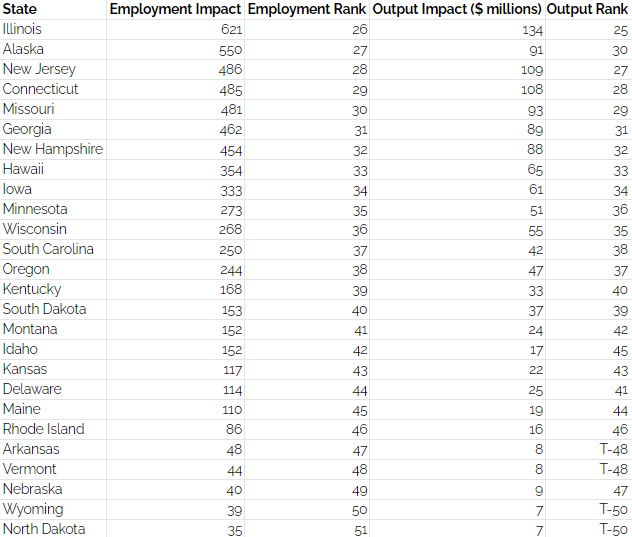
Source: NASA

Source: NASA

Source: NASA
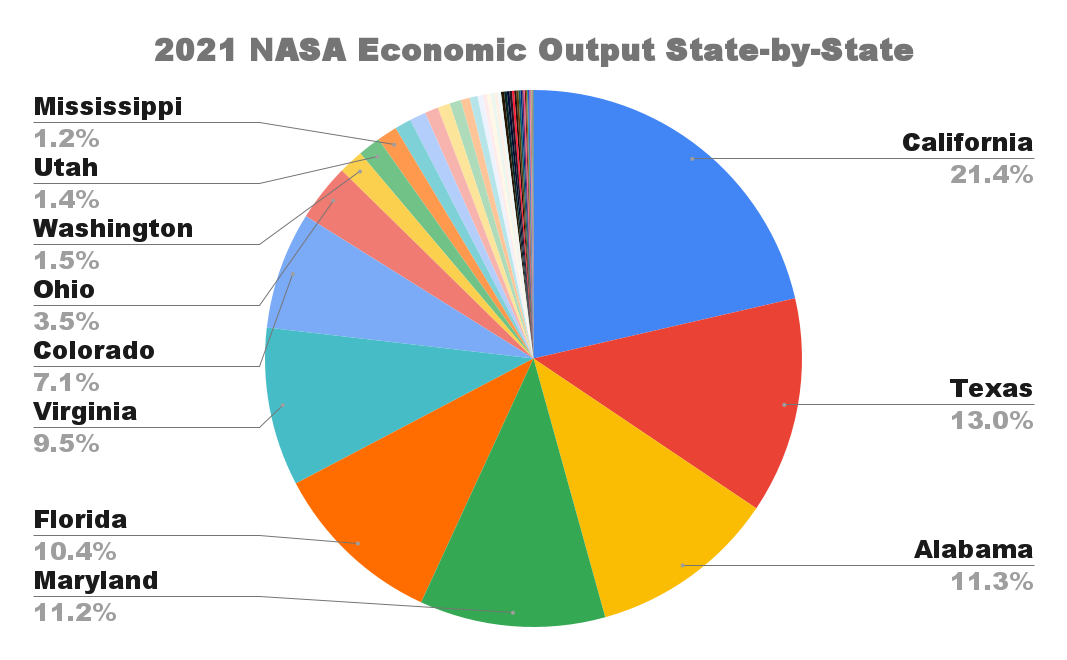
Source: NASA
Please note M-to-M stands for "Moon to Mars"
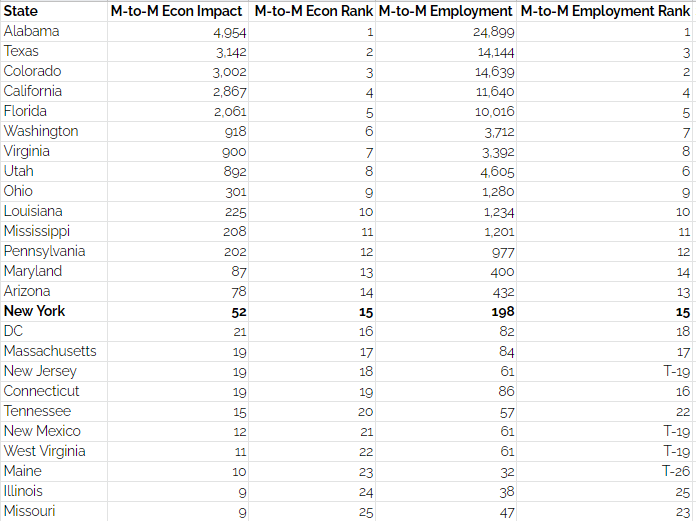
Source: NASA
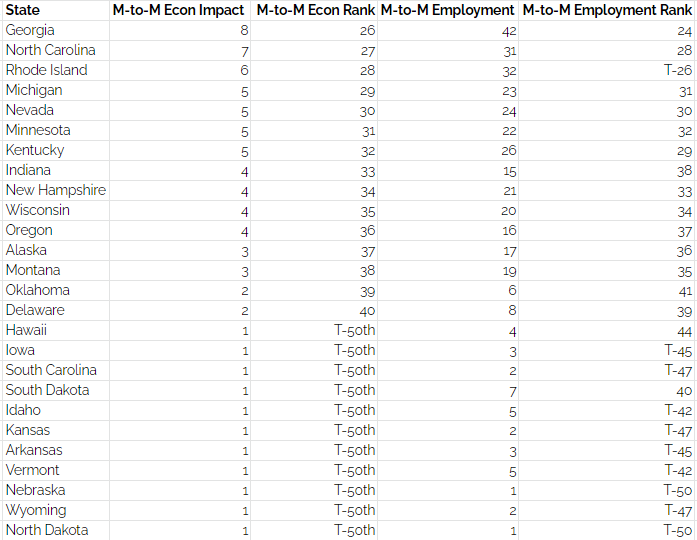
Source: NASA
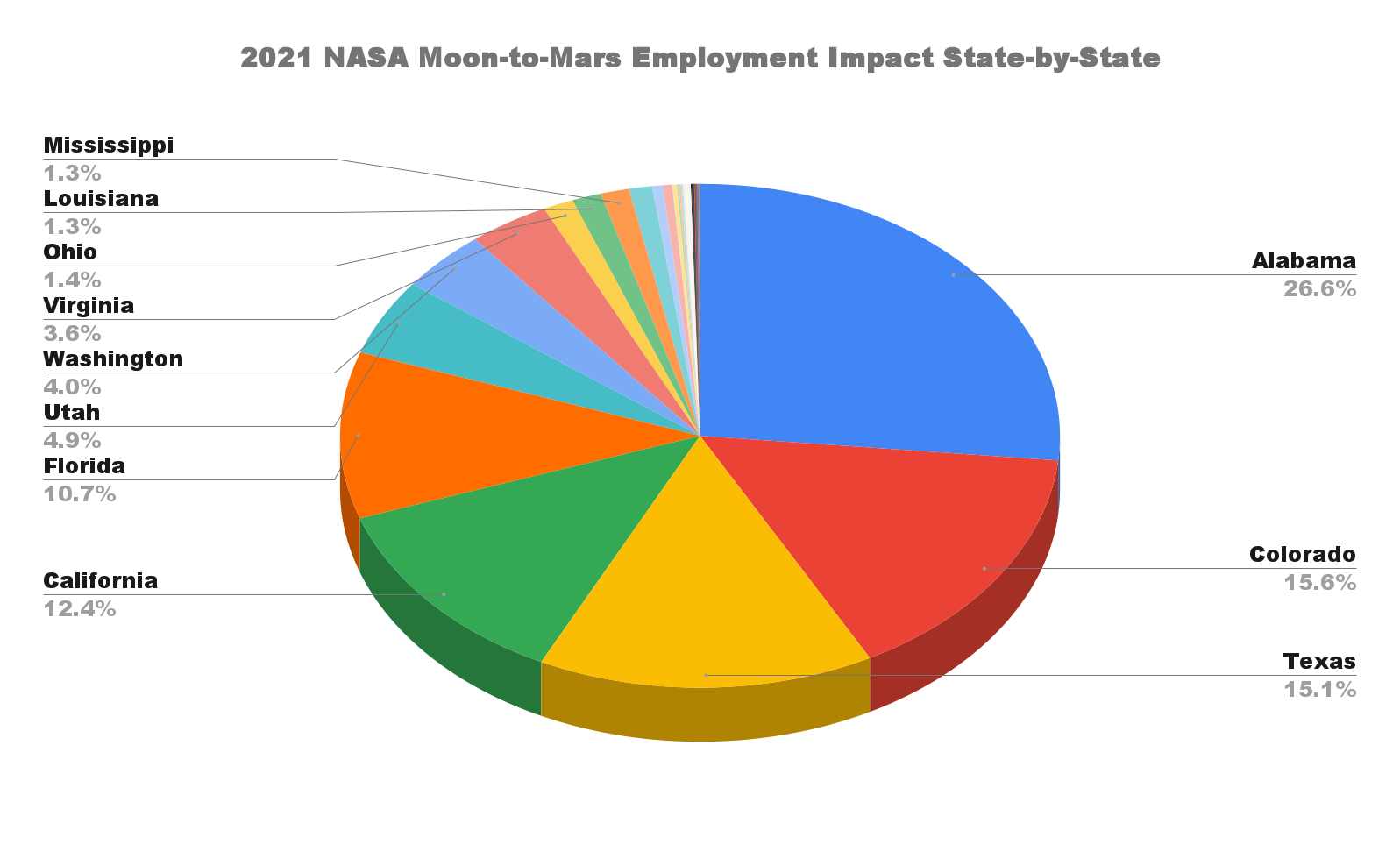
Source: NASA
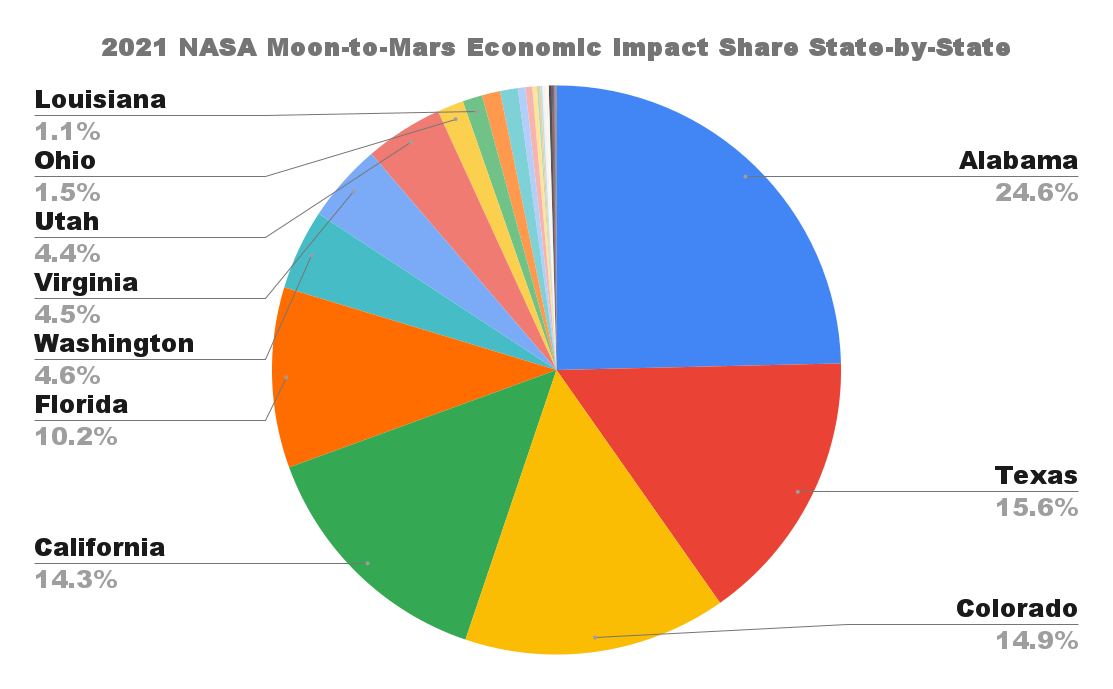
Source: NASA
New York & NASA
As the 15th ranked space state, New York is home to a significant NASA presence, even if it is not as mature or well developed as those elsewhere.
The primary NASA facility in the state is the Goddard Institute for Space Science in Manhattan, one of the agency’s primary operations studying Earth and other planetary atmospheres. Much of NASA’s climate change research occurs at GISS, and the Institute maintains strong ties with Columbia University to further this goal. Scientists from Cornell University have also played major roles in a number of NASA interplanetary missions, including the Spirit & Opportunity rovers to Mars.
In regards to NASA’s 2021 impact analysis, New York holds one place in all 4 rankings: 15th.
Specific #s include:
2,321 jobs supported (15th, 0.7% of total)
$531 million economic impact (15th, 0.7% of total)
198 Moon-to-Mars jobs supported (15th)
$52 million Moon-to-Mars economic impact (15th)
This impact is more robust and widespread than in most other states, but it obviously pales in comparison to much larger players such as California, Texas, or Florida.
There are a number of New York companies that have developed strong relationships with NASA in a wide range of fields including electronics, architecture, and hardware manufacturing.
* Betatronix employs 98 people at their Long Island facility. They develop high quality electronics, including systems certified for NASA missions. Follow them on Twitter.
* Clad Metal Specialties employs 35 people at their Long Island facility. They provide a range of high quality cladding services for the aerospace industry. Their work was even a part of the NASA Juno mission to Jupiter. Follow them on Twitter.
* Cloud Architecture employs 4 people at their Manhattan office. Their office has worked with NASA Langley on development of a Mars Ice Home concept for future crewed missions to the Red Planet. Follow them on Twitter.
* Honeybee Robotics employs 44 people at their Brooklyn facility. They are a NASA approved flight hardware supplier developing a series of planetary exploration missions.
* iRocket employs 2 people at their Long Island facility. They are developing an autonomous, fully reusable launch vehicle with strong support from NASA. HQ & manufacturing takes place on Long Island. Follow them on Twitter.
* Leidos employs 246 people at their Syracuse facility. They have decades of experience providing technical and mission support to NASA and the broader defense and aerospace industries. Follow them on Twitter.
* Linda Tool employs 23 people at their Brooklyn facility. They are an experienced precision machine company with space experience, including Nasa's "Return to Flight" program in 2004.
* Micross Components employs 318 people at their Long Island facility. They host extensive facilities for advanced testing and assembly of advanced components. Client list includes NASA and other aerospace giants.
* Optimax employs 350 at their Ontario facility in the Finger Lakes. They are a high quality precision optics manufacturer that includes NASA among its customers, with its products on every Mars rover and the TESS telescope. Follow them on Twitter.
* Space Exploration Architecture employs 2 people at their Brooklyn office. They have a decades-long partnership with multiple NASA facilities designing human-centric extraterrestrial habitat concepts. Follow them on Twitter.
These companies are just a snapshot of NASA’s economic impact on New York. A diverse range of companies operate in multiple regions of the state, focused on a wide range of fields that complement NASA’s mission.
Conclusion & the Future
While New York is not currently a Top Ten space state, it isn’t far behind. NASA is involved with numerous universities and businesses across the state, and Manhattan is home to NASA’s primary climate analysis facility. This activity generated a respectable economic impact in 2021, supporting over 2,300 jobs and generating $531 million in economic impacts.
There are still numerous questions for future reports to answer.
How have these figures changed over time? Are they growing or shrinking?
How has New York’s standing vis-a-vis the Top Ten changed over time?
What is the full and total extent of the ‘NASA Economy’ in New York?
The answers to these questions will reveal the trajectory of NASA’s role in New York and the future of the New York space ecosystem.